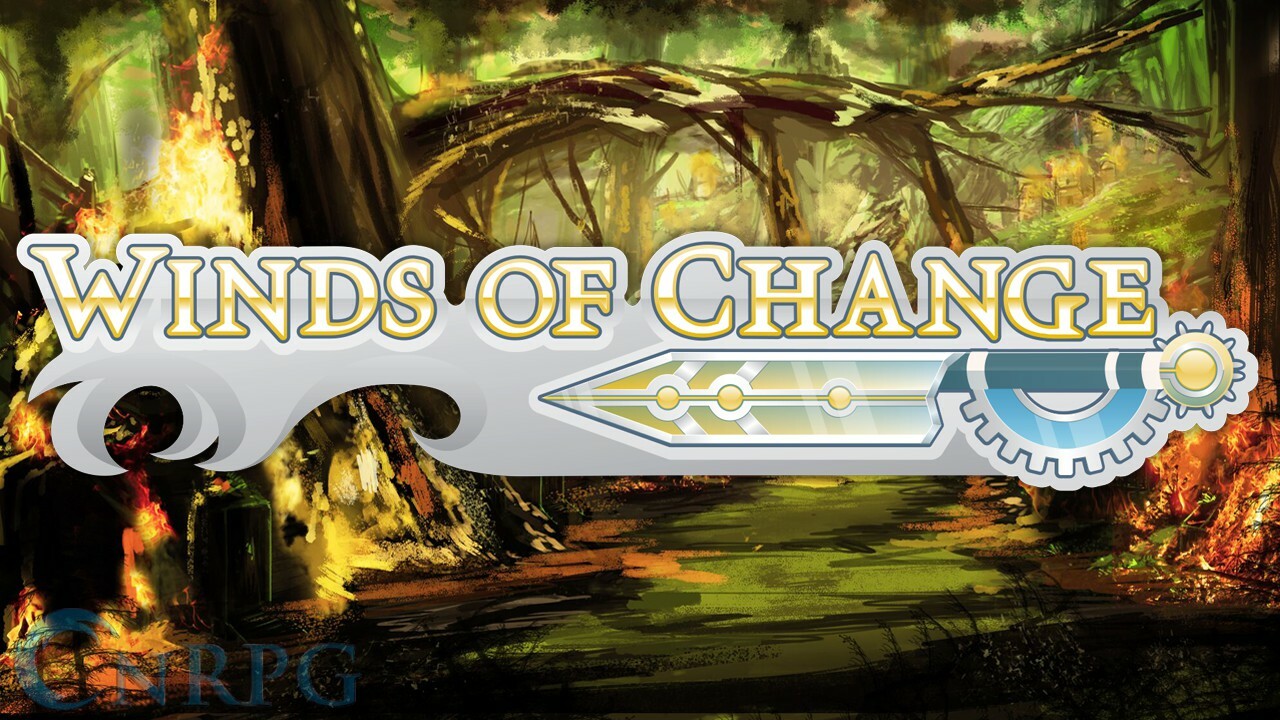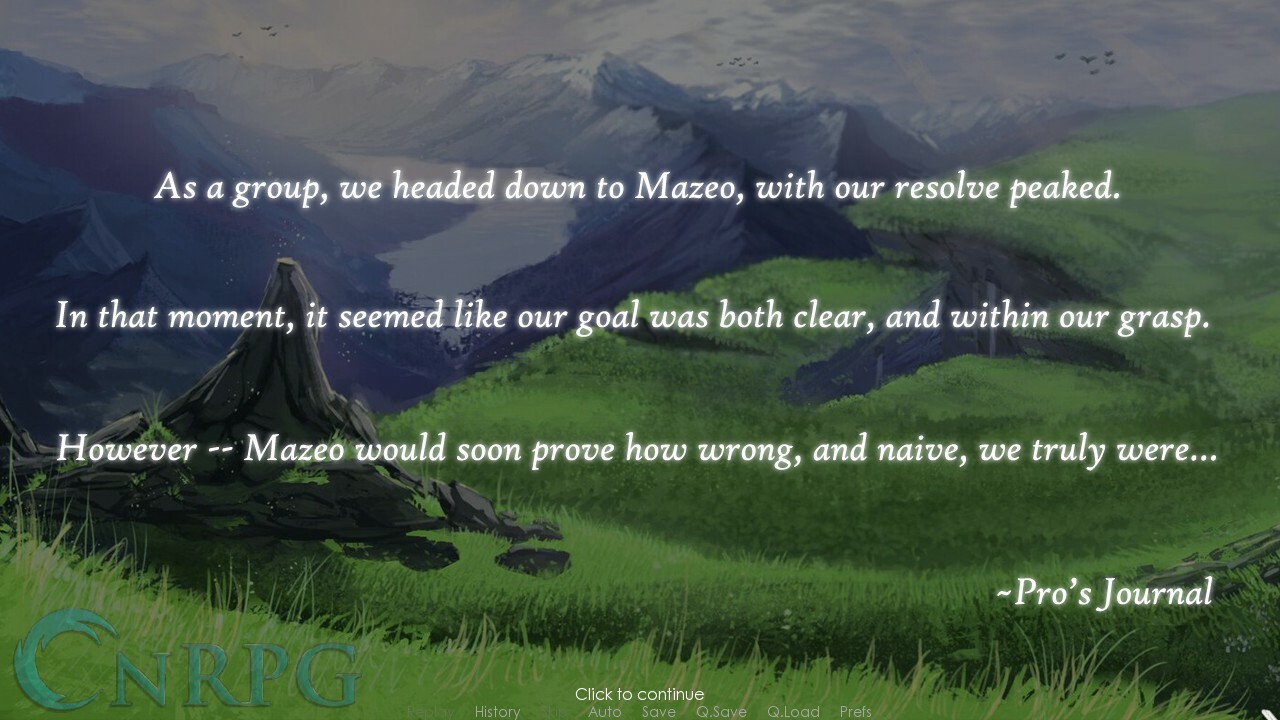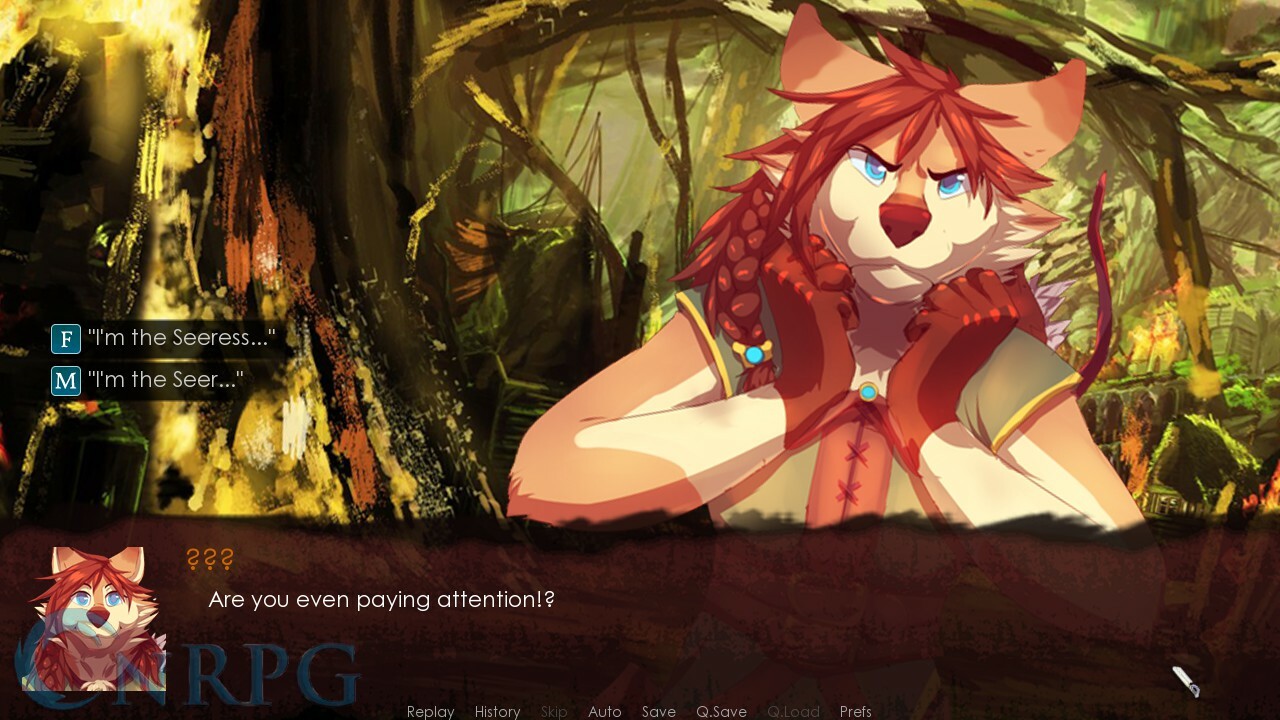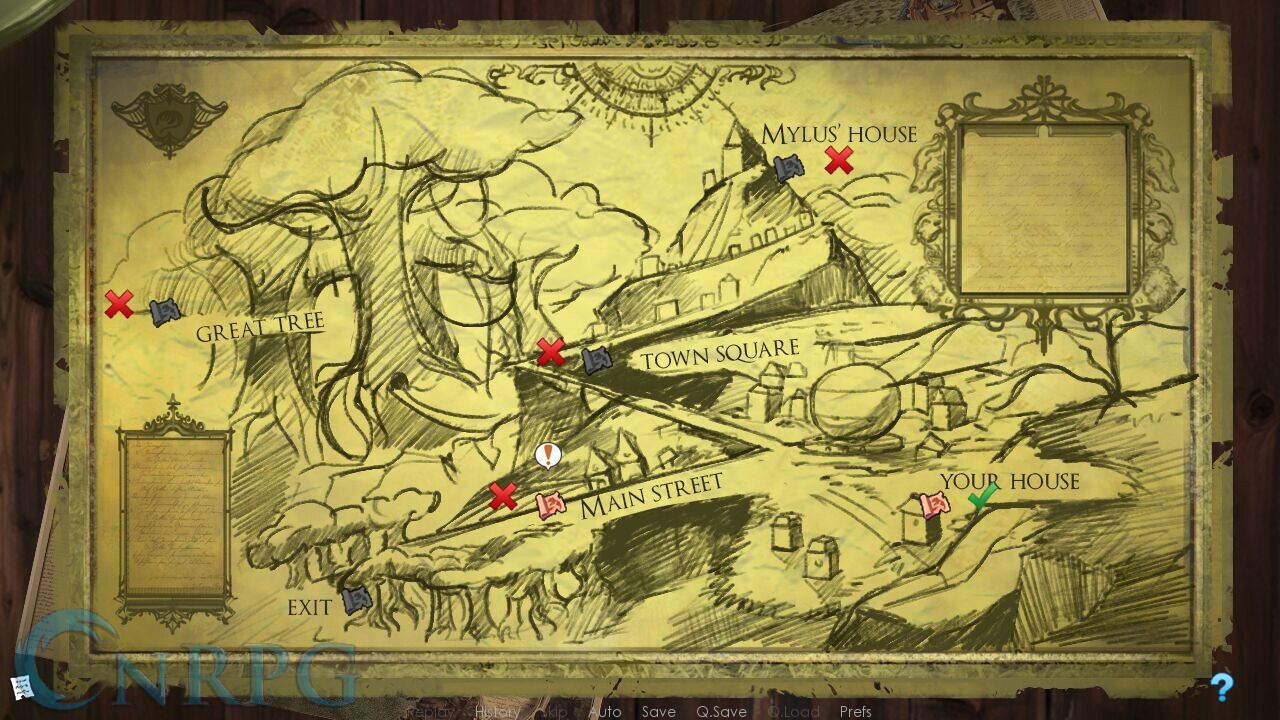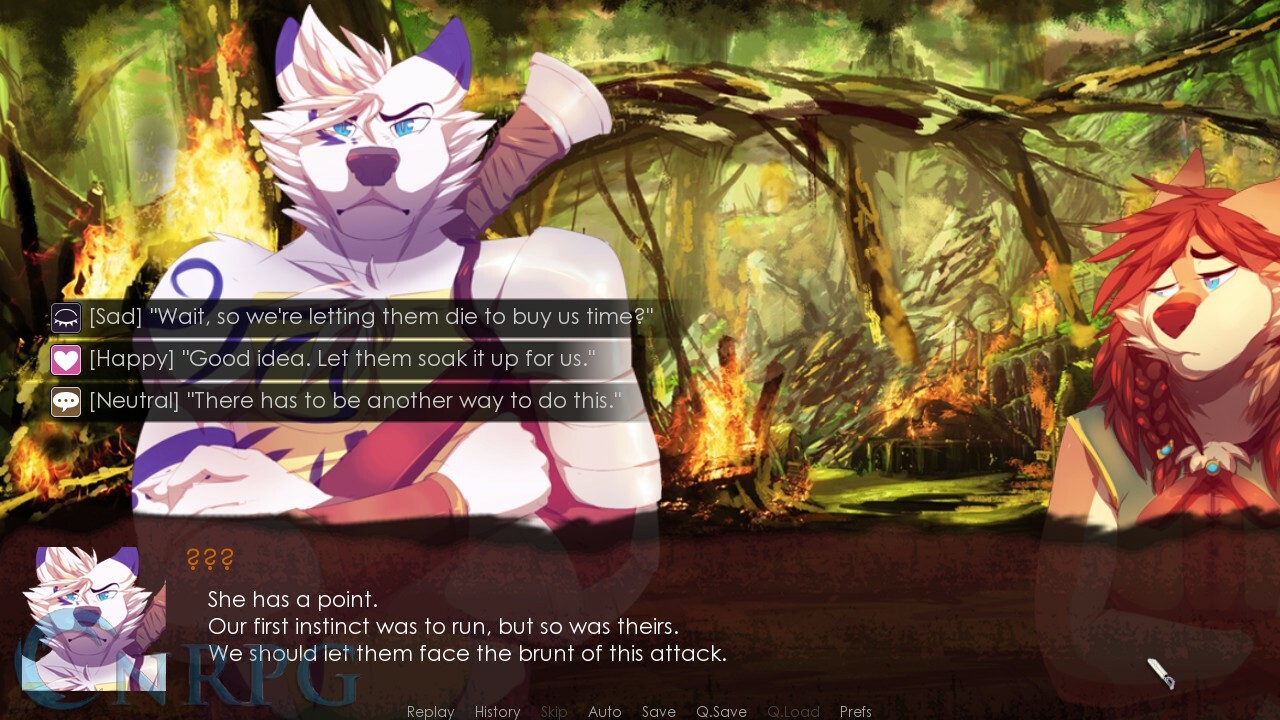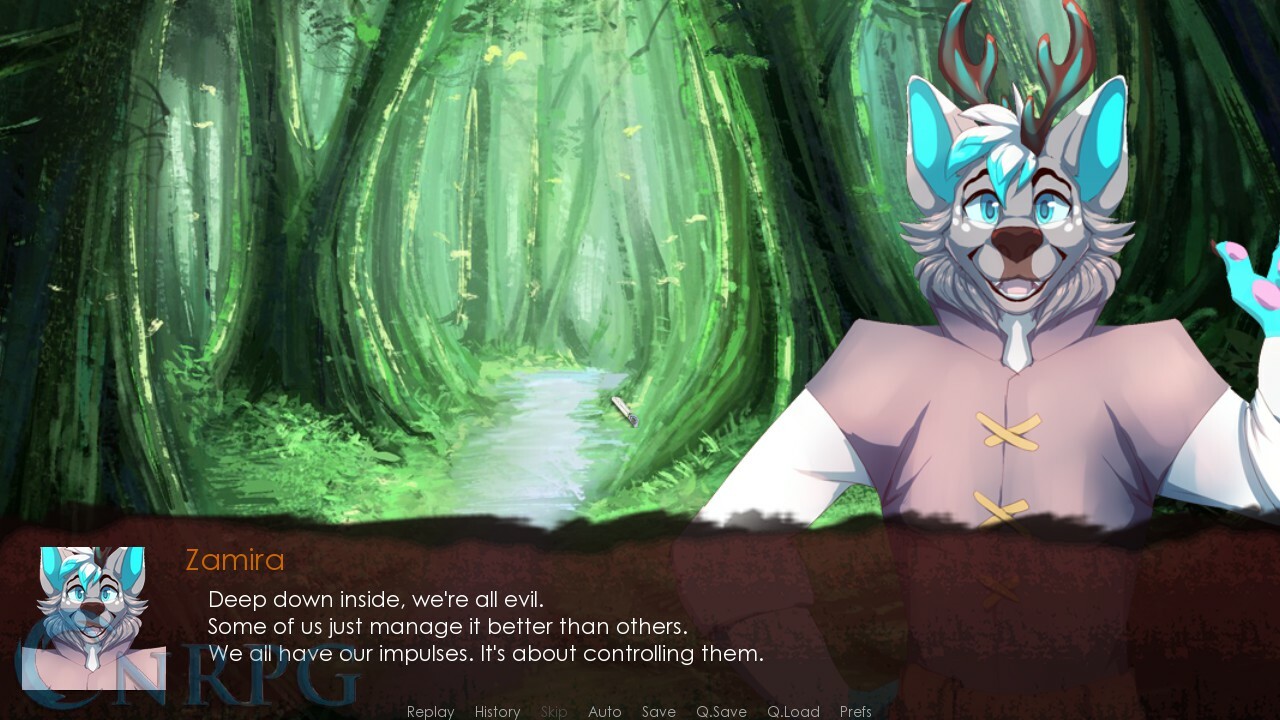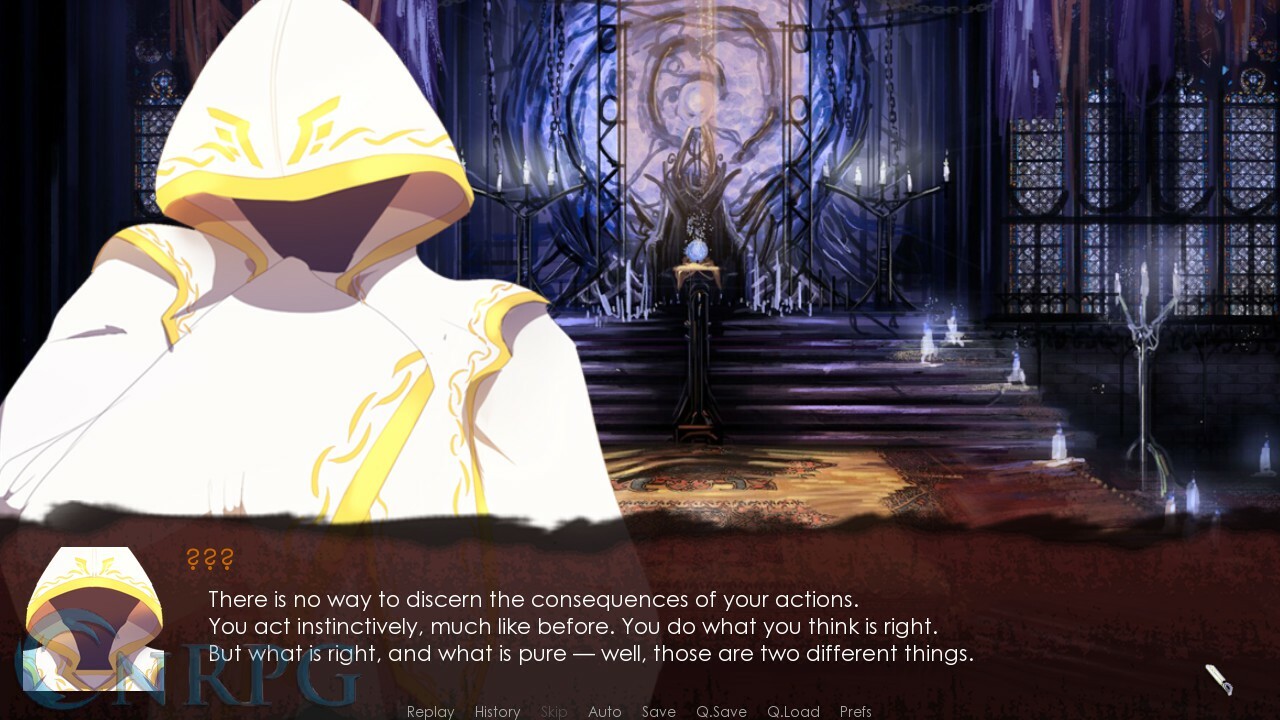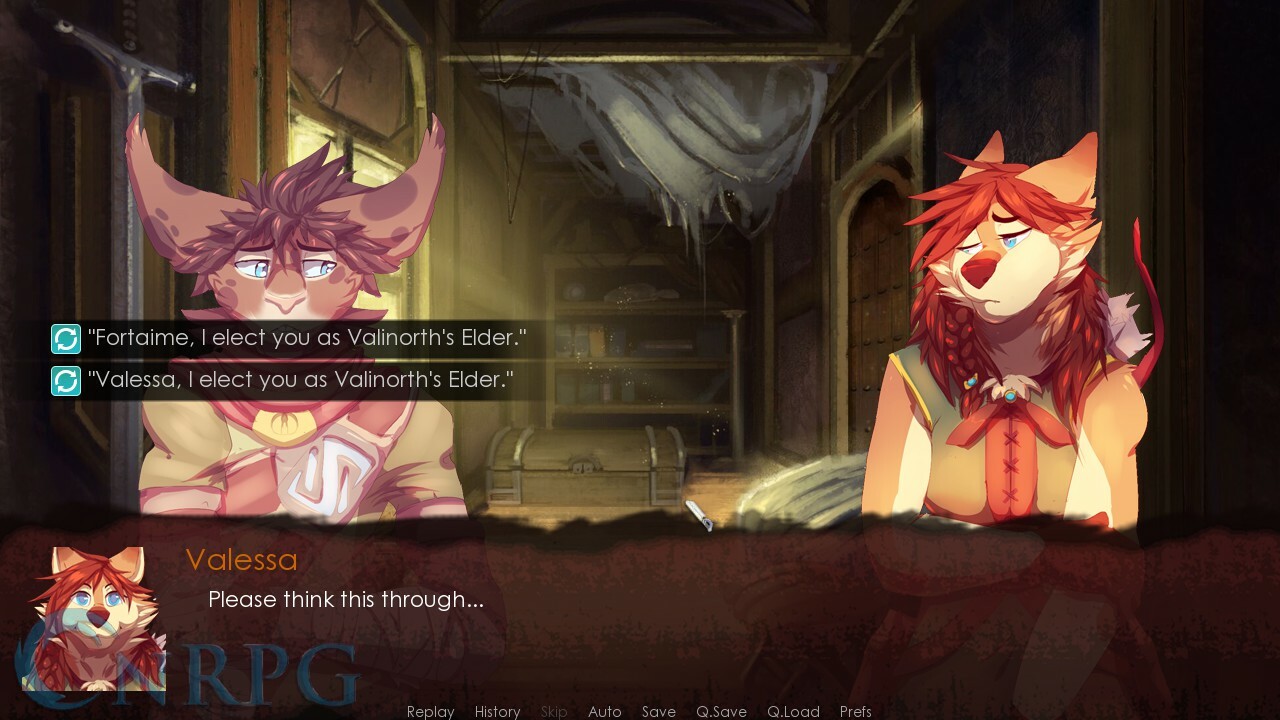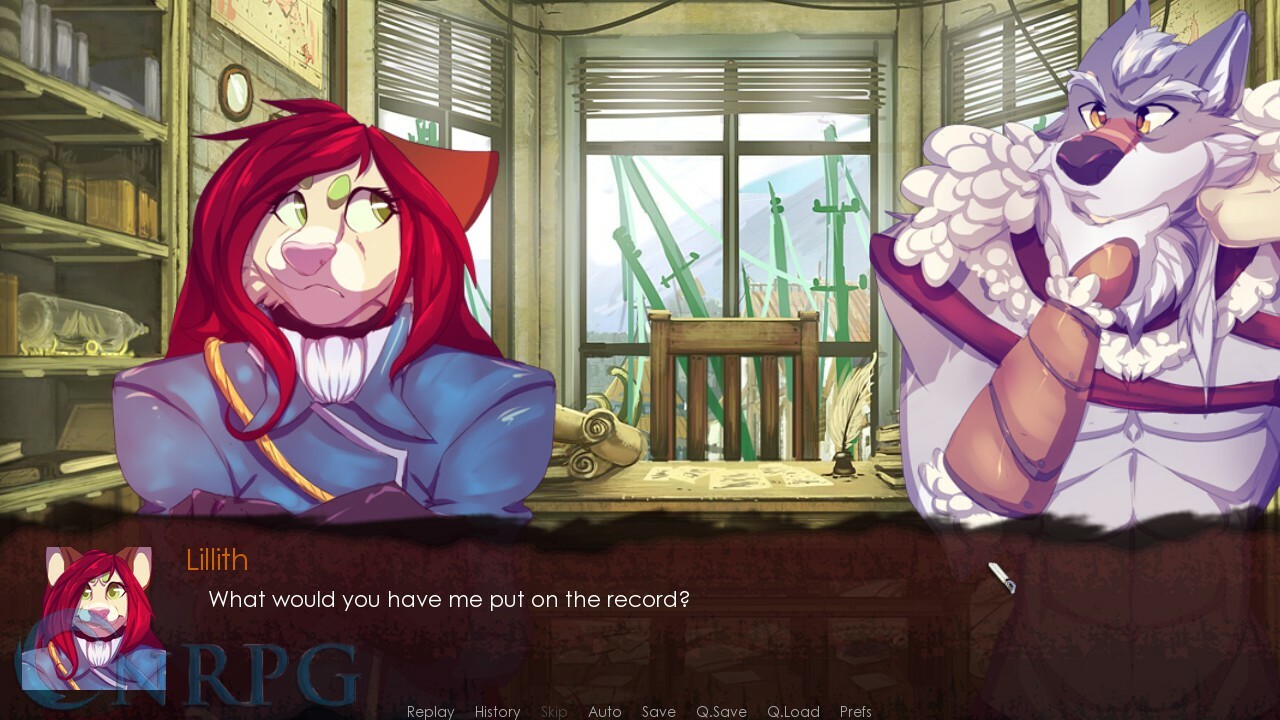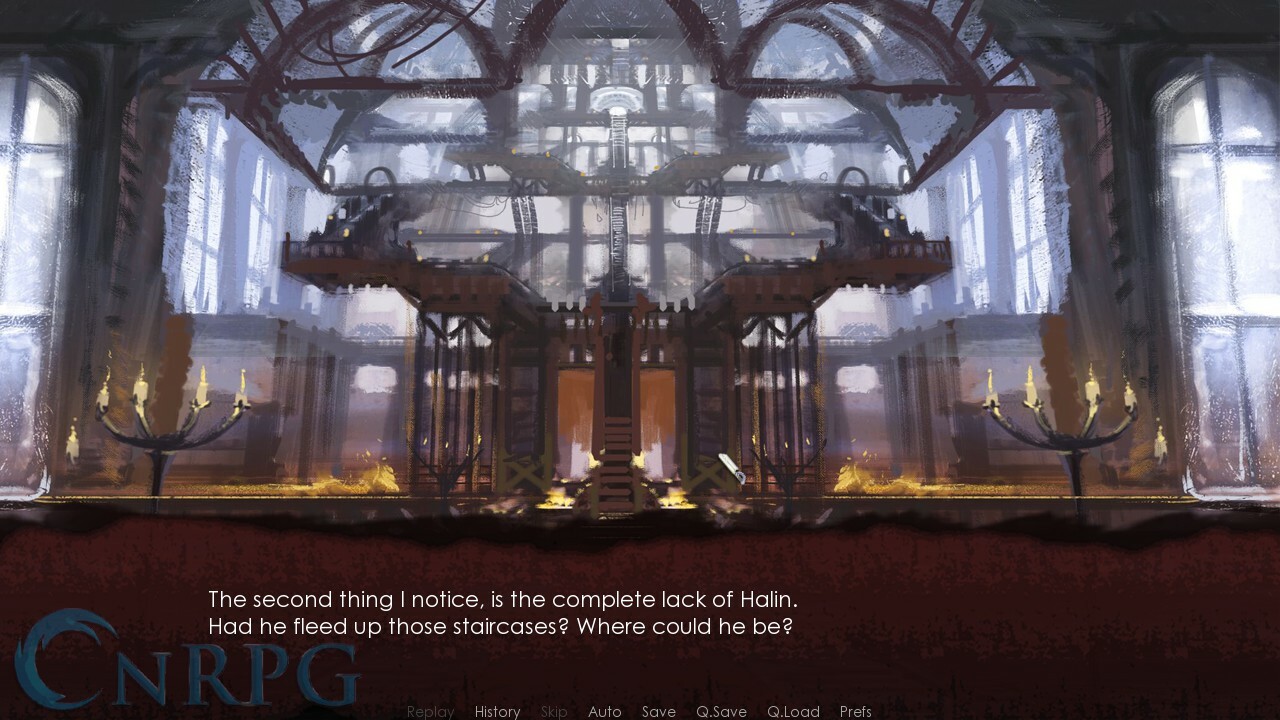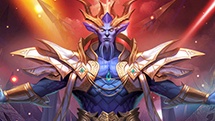By Jaime Skelton (MissyS)
Walk along the bridge between books and video games, and somewhere along your path you will find the visual novel. It’s a special genre of entertainment, offering graphics and interactivity to a normally text-based medium without the intensity of a full video game experience. While some gamers have turned their noses up at “VNs”, believing they lack enough gameplay experience to be classified as a video game, they’ve still managed to flourish on open markets such as itch.io and Steam.
We don’t normally review visual novels on OnRPG, given our focus on multiplayer titles and classic RPG experiences. But when Winds of Change came across my desk, I decided to give the visual novel a chance. It had more complex elements than most VNs, had full voice acting, and had been clearly, lovingly developed by its creative team. Oh, and it’s furry. If there’s anything I know that raises an eyebrow on the internet, it’s the f word.
The Elephant in the Room: A Brief Discussion of ‘Furry’
There was a time when the word “furry” elicited disgusted shivers in the same way the name “Mufasa” does for hyenas in The Lion King. Perceptions of the furry fandom in the past two decades have been tainted by exposure focused on sexual actions, discussions, art, and writing within the community. It’s a deep, dark history I can’t hope to cover here; one that doesn’t belong overshadowing Winds of Change. I have seen it best summarized in one thread on a furry-focused instance of Mastodon, which carries this potent line about furry identity: “we had no port in a storm but the red light district they built for us.”
Despite this dark history, furries are gradually becoming more accepted on, and off, the internet. Culturally, we’ve realized – or remembered, perhaps – that anthropomorphic characters are no more deviant than anything else humans have devised. A large part of the furry fandom – in fact, I’d argue the majority – are “clean,” uninvolved with kink or fetish. It has simply become one of many ways to express identity in a challenging world.
Winds of Change is no exception. Though many visual novels are heavy handed on sexual content (such as those created by Winged Cloud), Winds of Change is completely tame. Romance options are available, but expressed in mute tones. If anything, the overall tone and plot of the game is far heavier, dealing with morality, death, and cultural identity. So let’s move past the f word: Winds of Changes’ worth is not measured in fur.
The World of Alestia: The Backstory and General Game Flow
The main character in Winds of Change is ‘you’ – a nameless, blank character to impress yourself on. The novel allows you to input your own name, and choose gender (male or female only). You are the Seer/Seeress, an important role in the area known as Valinorth. The Seer is the only one capable of receiving visions from the Spirit World. To assist them, there is an appointed Scribe, Valessa, along with a Scribe-in-Training, Fortaime.
The novel begins with a dark, terrifying vision of Valinorth in flames, though neither you nor your assistants seem to know why. It reveals some secrets and characters that you will meet in the future; more importantly, it shows you the Blade of Exodus, the central object that will play a key role in the entire plot. Once you wake from your vision, you set out to inform the village Elder, and soon find yourself on a journey not just to save your home, but all of the world known as Alestia. Along the way, you will face some incredibly difficult choices – and their consequences.
Though there are many characters you’ll encounter on this journey, there are only six that will become part of your ‘party’: Valessa, Fortaime, Ulric, Pro, Damek, and Howl. These characters are the ones you will bond most closely with on your journey, and also serve as your romance options should you dare to date on your dangerous mission.
Your journey will take place over dozens of scenes, each with a beautifully painted background. All of these scenes are interactive, ala point-and-click adventures: you can click on areas of interest to see useful narration and sometimes elicit a brief conversation with a party member. Many of these scenes also hide books, which will offer further background story. Your character will also remember the information they have learned from these books, and be able to use that information in conversations with others. One other option exists on many scenes: parallel stories, which offer additional insights and stories from other characters in the novel. This includes stories from your enemies, so it benefits you to watch them all in order to have a full grasp on the story.
Winds of Change also features a world map, which allows you to move from scene to scene in the world of Alestia. It allows you to see which areas you have visited, including a couple of optional areas. As you go further on your journey, your map will continue to expand. It’s a nice thematic touch to give the game more of an RPG impression.
Count on Me: Interactions and Relationships
Like most visual novels, there are many decisions to make in Winds of Change that will affect the story and relationships around you. These decisions will often be represented with an icon that indicates the mood of the response – happy, sad, flirty, aggressive, playful, and neutral. Certain responses are, of course, necessary to ensure romance with your chosen datefriend. Romance in the game is very soft and slow, and completely avoids any sexual content.
In most scenes, there are two additional conversation options. In the bottom right, party members may be displayed with an indicator as to whether you’ve spoken with them. These are insightful conversations that reflect on the current moment in the story, and may sometimes have influential dialogue. In the upper right, party banter may appear, where members of your party may have conversations with one another that you can ‘eavesdrop’ on.
Alongside standard conversations during your journey, you will have multiple “Heart to Heart” encounters with each of your party members. These conversations are more personal, and give you the chance to learn more about your allies. Your choices in these conversations will play a major influence on your bond with each character, including romance and loyalty. ‘Loyalty’ is a hidden statistic that reflects the character’s trust in you as a leader, which will be vital in the last Act of the game. You can reflect on your relationship status with each party member in the War Room, unlocked once you reach a certain portion of the game.
Purity, Corruption, Morale: Measures of Leadership and Progress
Loyalty isn’t the only measure of your success as a leader. Winds of Change also traces your Purity, Corruption, and Morale (all visible from the save screen).
Purity and Corruption are two opposing traits which reflect the tone of most of your major decisions in the game. There are many difficult decisions to make along your journey, many of which may seem morally ambiguous. You are not told which is ‘pure’ or ‘corrupt’ until after you’ve made your choice, and some of those designations may surprise you. Because much of the game relies on a power struggle between two forces who are treated as “good” and “evil”, you might think of them in this matter. Still – though I cannot spoil the contents of the journey – you’re likely going to wonder which side, if any, is truly the right one. Purity and Corruption are meant to influence the endings you have available.
Morale, meanwhile, reflects the morale of your army (yes, you get one eventually). What changes your army’s morale is completely ambiguous, and in my play through, it didn’t feel as if I could truly influence the army morale at all in any direct manner. Nor, in the final act, could I really tell what morale was affecting; perhaps this would be more evident through multiple playthroughs, but it felt like an empty statistic through my first journey.
Praise: What Winds of Change Does Well
Winds of Change is a fairly long visual novel, taking about ten to fifteen hours to complete (my time clocked at 14 hours through a single playthrough.) It is told in five Acts, though only the fourth and fifth Act transitions are announced. With a large range of characters, six of whom have lengthy conversation options as your bonded allies, it’s impressive that the novel reached full voice acting completion (sans the main character and narration). The voice acting is high quality for a visual novel, though it has minor grievances against larger budget video games. Likewise, the character and scenery art is superb, and harmonizes well together for a fairly immersive experience.
I found most of the major decisions of the novel quite difficult to make. Even without trying to skew my purity or corruption stats, making choices that reflected my personal values was sometimes a struggle. Winds of Change often thrusts these choices at you without giving you much information or preparation for the decision at hand. For instance, your first major choice is to decide on which of your companions should become the next town Elder, long before you have gotten to know them deeply. The consequences of your choices often come back to tap you on the shoulder, and characters remember them throughout the story. This gives the game many branching paths to travel, and brings many good questions for self-reflection, along with opportunities for regret.
The game’s extra features, particular scene exploration, make Winds of Change take on both an RPG feel and a point-and-click-adventure vibe. The novel is neither, of course, but those extra features add an extra immersive layer that helps separate it from the myriads of Ren’py produced VNs. All of this is enhanced by the unique offering of a ‘furry’ story, a visual novel produced by creatives who may not have their voice easily heard in mainstream gaming. It’s one of the best things about visual novels and their accessibility, and Winds of Change offers a high quality experience.
Criticism: What Winds of Change Gets Wrong
The greatest flaw in Winds of Change is creative dissonance. Several of the creative elements of the game are unsettled well together on critical examination. The end result is jarring.
Character choice is the first area where flaws show. The furry community is known for supporting a wide range of gender and sexual identities. Making the player choose between Male or Female, disregarding non-binary choices, seems out of place. In fact, this could easily be resolved by simply calling the character ‘Seer’ and offering no gender choice at all, utilizing singular ‘they’ for any pronouns. Not only would this be more inclusive and easy to incorporate in a visual novel medium, it reduces the amount of script work and voice acting required.
More confusing than the gender choice, however, is the balance of romance options. One female, and five male characters, means that there is only one option for lesbians and heterosexual males, along with restrictions for bisexual players. I feel this might be a result of the game’s original structure (as seen on Kickstarter), in which Valessa was the player character. In that structure, the novel would have served as a reverse harem style plot. While changing the main character to be a player self-insert was a great direction, the rest of the game did not adjust well around this decision.
Here’s the final expression sheet of Ulric.
Art by https://t.co/aQW5yBNlHf
Game/Story by me. Character by Fahleir. pic.twitter.com/vZdTeeeFSY— Klace @ FM (@Klace) October 26, 2016
The character art of the game also sends mixed signals. While many of the characters are ‘realistic’ anthros (using natural skin tones and colors), others are shockingly bright and unnatural in their design. Most of the designs are canine (a common furry choice), others are shoved in with little grounding in story. And to be blunt, for a furry game that seeks to distance itself from the “sexual deviancy” expected of the term, there’s an awful lot of beefcake going on with many of the male character designs. If the novel is non-sexual in nature, why do the characters need to have their bodies exposed to just above their pelvic line?
Finally, there’s the story plot itself. The first three acts of the game are fairly well knit, with no grammatical errors or typoes, and a plot that seems to carry itself fairly cleanly toward a resolution even after a major crisis. Yet the fourth and fifth act feel disjointed from the rest of the story, almost as if they were pieced together after a long gap in the creative process. There are frequent (though small) errors, and many key plot threads are left hanging freely. If the main character’s visions being unaccounted for isn’t enough, the story twists reality and time to come to a conclusion. While other endings I didn’t experience likely shed more light on the story, my final moments in my first playthrough were disbelief, confusion, and disappointment. At least one ending is so far-fetched, it’s as if it was either rushed or written by a different author entirely.
Final Thoughts: 3.5/5 (Good)
If Winds of Change had kept consistent writing and narrative through the final acts, I would have given the game a higher rating. Criticisms against gender choice and romance options aside, the novel is high quality for its genre throughout most of the novel. The final acts, however, were a dreadful drop in quality that severely soured the experience.
That’s not to say that visual novel readers and furry fans won’t enjoy Winds of Change. Sometimes, it’s necessary to put aside literary criticism and simply enjoy a thoughtfully crafted story. My own expectations for storytelling are high, given my line of work, and so I don’t reflect the feelings of the average reader. Given the high community ratings on Steam, I’ve no doubt that if you’re looking for a grand fantasy adventure, Winds of Change is worth your time.
Note: A key was provided for review purposes.
Winds of Change Screenshots

